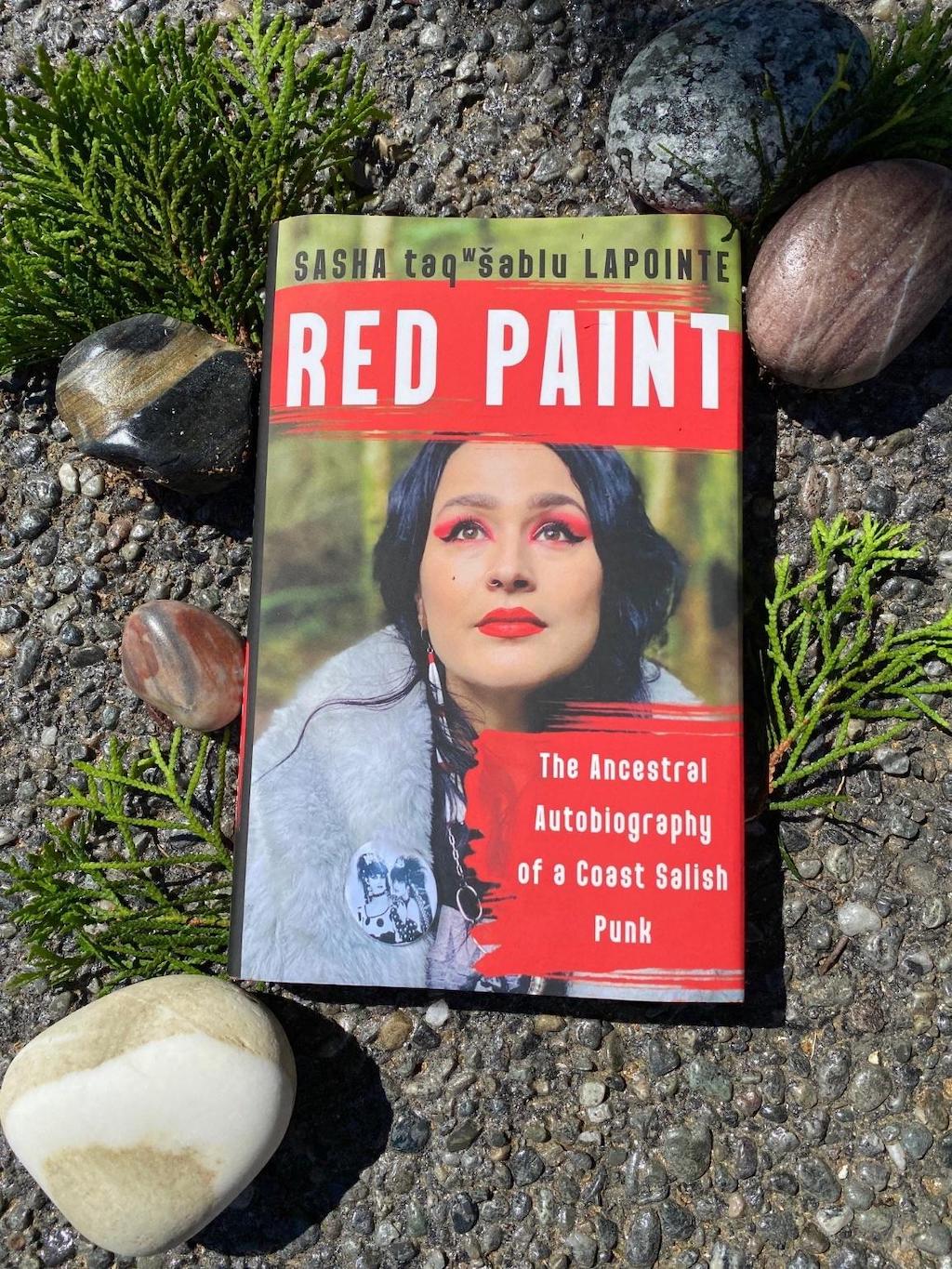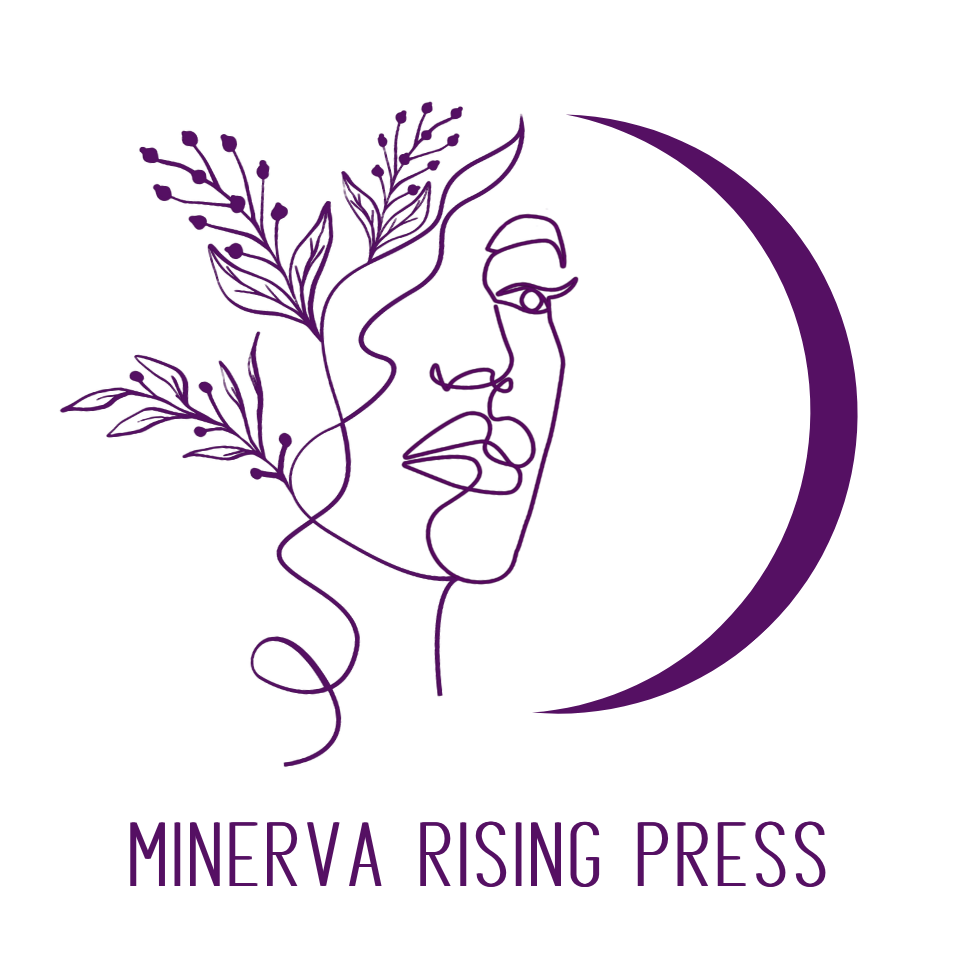Red Paint by Sasha taqʷšəblu LaPointe

Red Paint
by Sasha taqʷšəblu LaPointe
Counterpoint (2022)
$25.00 (hardcover)
ISBN-13: 978-1-64009-414-7
Book Review by Rebecca Beardsall
When we found the tarot reader, it was meant to be light. The fortune-teller looked me over as she pulled my cards, then before finishing the reading said plainly, “Your heart is broken.” I looked up at her in the small tent we sat in and raised my eyebrows. I hadn’t said anything. (130)
This quote is about halfway through the book Red Paint, but the brokenness of Sasha LaPointe’s heart is exposed from the start in this eloquent memoir, which invites the reader into LaPointe’s quest for “a place to feel safe” (24).
A life of trauma and homelessness is traced through the personal and the collective, brought on by settler-colonialism, each looping back on the other. LaPointe looks directly at her history in relationship to her present. And through it all, she is reminded that she comes from a line of strong Coast Salish women. One of the women the reader is introduced to is Comptia Koholowish who “fled her village following a smallpox epidemic that had claimed the lives of her loved ones” (46). She survives on her own before marrying Captain Johnson who changes Comptia’s name to Jane and forces her to live in a shack behind the main house where he lives.
The book is a mapping through time, memory, and lineage. Red Paint brings together a narrative of self-discovery, resiliency, and healing while weaving in the narratives of the women in her family.
At one point, LaPointe’s husband says, as she cries curled up in a ball on the floor, “‘You’re not well. It’s like all the women in your family, your mom, your grandma, you all have the same thing, you’re all sick’” (103). And in order to heal herself, she needs to not only look at her past but also the choices she is making.
In a quest to find a safe space and create a home, LaPointe marries Brandon while relying on her friend and past-love for emotional support. This triangle brings home and belonging as well as sadness and distrust. At one point LaPointe states, “I kept going, like I could somehow outrun my fear, those pink lines, my brokenhearted friend, my angry husband” (137). The only way out of the cycle she is born into and continues to create for herself is a deep healing, and for that LaPointe once again turns to her ancestors, a lineage of healers. She states, “Healing is different from self-medicating. Healing is exhausting” (186). The reader is there with LaPointe when she journeys into herself: “They feared I would drown, but what they didn’t realize was that I already had, that this was my resuscitation ritual” (178).
LaPointe in her research finds the map that will bring her into her power and strength, “The information fanned out in front of me was laid out like a map. Comptia, Aunt Susie, and taqʷšəblu – these women were my guides, my lighthouses burning in the distance” (189). Following this LaPointe travels to the Chinook region, the place currently called Astoria, Oregon. On a quest to honor Comptia, LaPointe finds herself sitting down outside the house of Captain Johnson with a candle, a bundle of cedar, and a piece of red clay. She is called there, not to honor the past but to ignite the future: “I thought I had come for her (Comptia), but she had called me there, to tell me something. It wasn’t to say a prayer for her, or to honor her, or to release her. She was releasing me” (205).
Weaving together narratives through time linking her life to a lineage of healers, LaPoint finds her voice in this powerful memoir. Red Paint is a passionate and vulnerable journey that highlights the traumas caused by settler-colonialism while traversing the path to familial roots and healing.
Rebecca Beardsall (MA, Lehigh University; MFA, Western Washington University) is the author of My Place in the Spiral. Find her at: rebeccabeardsall.com
